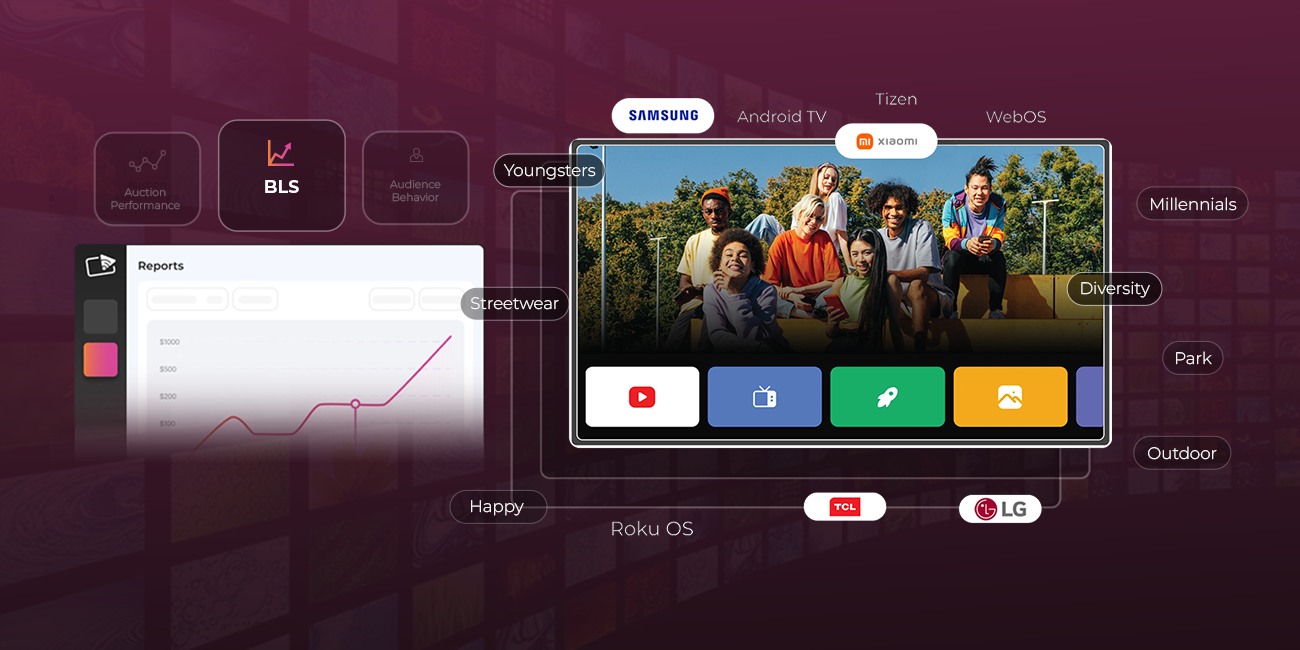
In today’s fast-evolving digital advertising landscape, understanding your audiences goes far beyond traditional demographics, as it is essential to dive into the nuances of how they behave, what they prefer, and how they engage. Research from Intelligent Node highlights that 2 out of 3 shoppers are always seeking the best deals and are open to exploring new brands. This trend signifies heightened purchase intent and a growing appetite for media. By employing advanced audience mapping with psychographics, interests, affinity targeting, and more, advertisers can run campaigns of high relevance to the target audience.
For instance, an automotive brand that segments its audience based on the vehicle ownership journey, such as first-time buyers, family upgraders, and premium switchers, can craft highly personalized ad experiences that truly resonate. First-time buyers can be engaged with messaging around flexible financing and safety features, while family upgraders are shown campaigns focused on space, comfort, and versatility. Meanwhile, premium switchers receive content highlighting luxury upgrades, cutting-edge technology, and exclusive experiences. This strategic approach ensures that each audience segment receives communications aligned with their specific needs, aspirations, and decision-making triggers—making the brand more relevant and memorable at every touchpoint.
Moreover, leveraging granular insight into audience behavior helps brands identify and engage distinct segments of their potential customer base. It enables them to tailor their messaging based on interests, content preferences, geographic locations, and behavioral data for utmost relevance. When viewers come across an ad that truly resonates with their needs, they’re more likely to engage with the brand, enhancing brand awareness and shaping a narrative that fosters stronger brand-customer connections.
To explain it better, a food brand can leverage audience mapping to segment its consumers into distinct personas such as frequent grocery shoppers, health-conscious eaters, food enthusiasts, or content creators like food vloggers. By understanding each group’s motivations, behaviors, and preferences, the brand can deliver personalized ad experiences that speak directly to their interests. For health-conscious consumers, this could mean highlighting nutritional benefits or clean ingredients. Similarly, for food vloggers, showcasing trending recipes may spark engagement, while for corporate professionals away from home, delivering protein bars and ready-to-eat food packages would ignite curiosity and strengthen brand affinity by aligning with each audience’s lifestyle and values.
Further adding, a RedSeer study reveals that 70% of online shoppers in the UAE and KSA expect brands to know their preferences and offer relevant product suggestions. This highlights the critical role of smart audience mapping in enabling personalized ad delivery across every touchpoint. A study by Meltwater further supports this, revealing that consumers in the UAE are most active on social media around 10 p.m., making it a prime window for brands to capture attention and drive engagement. By understanding not just who the audience is, but also when they are most receptive, brands can optimize their strategies—delivering the right message at the right moment to maximize impact.
A unified CTV solution can further refine this precision, offering brands a central platform to manage campaigns across various streaming services, apps, and channels. This integration eliminates fragmentation and supports consistent messaging, enhancing efficiency and campaign performance. Access to comprehensive performance insights enables brands to fine-tune targeting strategies, craft compelling narratives, and allocate budgets effectively.
It’s important to recognize that consumer behavior is constantly evolving, shaped by shifting cultural narratives, shorter attention spans, and growing ad fatigue, making relevance the new currency for meaningful brand impact. Here, real-time optimization empowers brands to adapt their campaigns promptly to match changing trends on the go. For instance, an e-commerce brand specializing in gifting can harness real-time data to personalize offerings based on current trends, showcasing curated gift options tailored to consumer preferences. Additionally, through AI-driven audience segmentation, brands can refine their messaging and highlight premium products for corporate gifting or unique bundles for personal celebrations. This way, the campaign can continuously adapt throughout its lifecycle, fostering meaningful connections with consumers.
To conclude, utilizing insights to understand consumer behavior, brands can elevate their relevance and impact, transforming their marketing efforts into a powerful tool for success.
‘Brands that invest in understanding their audience deeply will lead the way in building lasting connections.’
Written By Gagan Uppal, Country Head MENA, Xapads Media








